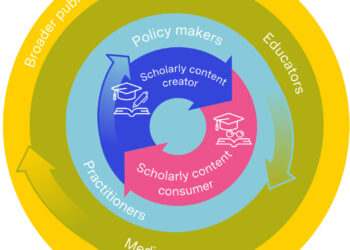A recent article in the Journal of Product Innovation Management caught my eye because it explores and extends a theory I’ve liked for a long time — Clayton Christensen’s disruptive innovation model. The new article by Schmidt and Druehl expands thinking along these lines, underscoring why some disruptive innovations can be so sneaky, and also talking about why some innovations are purposefully disruptive.
The authors break down disruption into low-end encroachment — introductions into a market meant to address users with lower price points or less sophisticated needs — and high-end encroachment, which is meant to meet the needs of users willing to pay a premium for more functionality.
A great example of a high-end encroachment is a new Pentium chip or a new cell phone. Here, an incumbent purposely creates disruptive value by encroaching on its product line from the high-end.
For low-end encroachments, the authors talk about three main types:
- Fringe-market low-end encroachment: The new product opens up a fringe market first, then moves mainstream (example: iPod vs CD music)
- Detached-market low-end encroachment: The new product comes from a market not normally associated with the current market, and enters with a different value profile (example: cell phone vs land line)
- Immediate low-end encroachment: The encroachment begins immediately (example: discount retailer vs department stores)
What is happening in scholarly publishing? First of all, there is low-end encroachment of all three varieties, I’d say. PLoS and similar offerings could be fairly characterized as immediate low-end encroachment; reference services, workflow solutions, and similar information offerings bring detached-market low-end encroachment; and RSS feeds, search engines, and Wikipedia offer fringe-market low-end encroachment.
What about high-end encroachment? This is where publishers and information providers seem to be lacking. In fact, some forces in scholarly publishing actively work to prevent high-priced, specialized, feature-rich solutions, even for people willing to pay. There is political activism of a fairly rare stripe at work in the land.
It’s an interesting notion to explore. Is scholarship on a “race to the bottom” of value propositions? What models can still support high-end disruption? Have changes in basic information infrastructure made high-end disruption impossible?
If all our disruptions are low-end, what are we building?
Discussion
2 Thoughts on "Sneaky Disruption, High & Low"
The example of high-end encroachment in scholarly publishing that comes immediately to my mind is semantic tagging. I’m not referring to the low-end community based tagging that is rapidly becoming so common (and has its own distinct value–this is not an either/or). I’m talking about the very expert, systematic, granular, and USEFUL semantics that publishers like–well, Kent, like your own New England Journal of Medicine–add to their content. True, there are only a few out there who are doing this; they tend to be leaders in other ways (again, like NEJM) or commercial services who do this for commercial advantage. And believe me, it’s a real differentiator. An example of the latter is ProQuest’s Illustrata, which adds semantics to image data, making the images MUCH more useful. Another example is the technology Bob Kelly from APS and John Gardner from ViewPlus Technologies demonstrated at the SSP Annual meeting this year–designed to make images in physics journals accessible to the visually impaired, but as a side effect making them much more useful to physicists in general, who can apply analytical techniques to collections of images that they previously could apply only to text or data. Cool stuff does happen at the high end!
One more comment: remember when a few publishers started to make it possible for you to click on a citation and actually GO TO the cited paper? Zowie, was that cool!!! Took a lot of effort, but boy, was that a differentiator . . . then.
![Reblog this post [with Zemanta]](http://img.zemanta.com/reblog_e.png?x-id=33f9a883-649b-4af0-9b1d-429080f7ea85)


